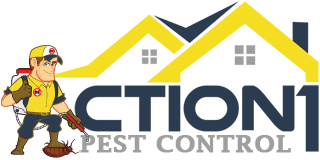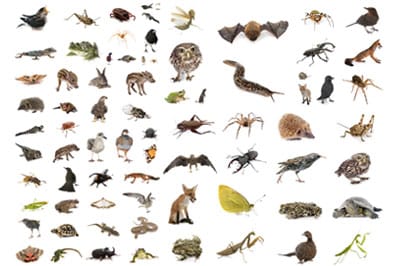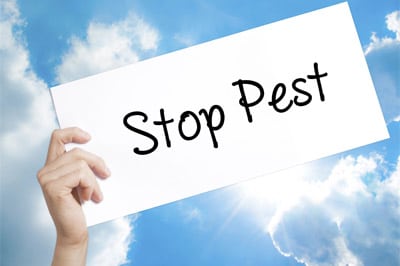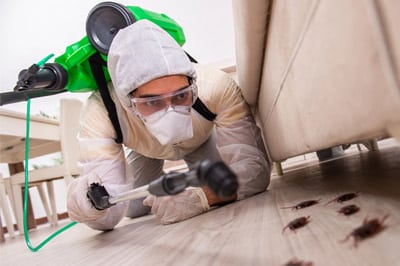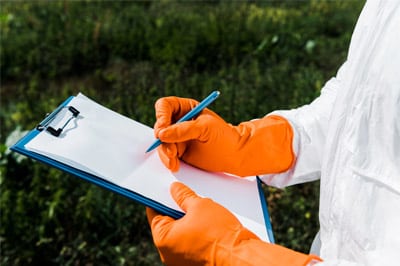Mosquito Control and Extermination
Call Us Today- Home
- »
- Pest Control
- »
- Mosquito Exterminator
Effective mosquito control requires a comprehensive approach that combines elimination of breeding sites, targeted treatment methods, and personal protection strategies. The most successful programs integrate multiple techniques rather than relying on single solutions that often prove inadequate against mosquito populations.
We can significantly reduce mosquito problems through understanding their biology, implementing proven control methods, and taking appropriate preventative measures. This guide examines the science behind mosquito behavior, explores both chemical and natural control options, and provides practical strategies for protecting ourselves and our communities from these troublesome pests.
Highly Trusted Mosquito Control Company

High Quality Services

Affordable & Upfront Pricing

Emergency Same Day Service
Understanding Mosquitoes and Their Impact
Mosquito Biology and Habits
Female mosquitoes require blood meals to produce eggs. They locate hosts through carbon dioxide, body heat, and chemical scents we emit.
Standing water is essential for mosquito reproduction. Common breeding sites include:
- Storm drains and gutters
- Flower pots and containers
- Birdbaths and pet water bowls
- Tire casings and tarps
- Clogged rain gutters
Adult mosquitoes typically live 2-4 weeks during warm weather. Most species are most active during dawn and dusk hours when temperatures are cooler and humidity is higher. Different species prefer different environments. Some breed in clean water while others thrive in polluted or brackish water sources.
Diseases Spread by Mosquitoes
Major mosquito-borne diseases include:
| Disease | Primary Vector | Symptoms |
|---|---|---|
| West Nile Virus | Culex species | Fever, headache, body aches |
| Dengue | Aedes aegypti | High fever, severe headache, joint pain |
| Zika | Aedes aegypti | Mild fever, rash, joint pain |
| Malaria | Anopheles species | Fever, chills, flu-like symptoms |
West Nile virus represents the most common mosquito-borne illness in the United States. Most infected people show no symptoms, but severe cases can cause brain inflammation.
Dengue fever affects millions globally each year. Severe dengue can lead to plasma leakage, bleeding, and organ impairment.
Nuisance Mosquito Species
Floodwater mosquitoes emerge in large numbers after heavy rains or flooding. They breed rapidly in temporary water pools and can travel several miles from breeding sites.
Container-breeding mosquitoes like Aedes albopictus (Asian tiger mosquito) are aggressive daytime biters. They breed in small artificial containers around our homes and yards.
Salt marsh mosquitoes can fly 10-15 miles from coastal breeding areas. These species create dense swarms that can overwhelm entire neighborhoods during peak emergence periods.
Northern house mosquitoes (Culex pipiens) are common urban pests. They breed in organically enriched water sources like catch basins and sewage treatment facilities.
Human activities often create ideal breeding conditions for nuisance species through poor drainage, container storage, and landscape irrigation practices.
Our 5 Step Pest and Mosquito Control Process

Fundamentals of Mosquito Control
Importance of Mosquito Control
West Nile virus remains a primary concern in many regions. Mosquitoes become infected when they feed on infected birds, then transmit the virus to humans through subsequent bites.
Beyond disease transmission, nuisance mosquitoes affect our quality of life. These species bite humans but don’t spread pathogens, yet they make outdoor activities uncomfortable and reduce property values in heavily infested areas.
Health impacts include:
- Vector-borne disease transmission
- Allergic reactions to mosquito saliva
- Secondary infections from scratching bites
- Sleep disruption and stress
We must prioritize mosquito control to prevent disease outbreaks before they occur. Early intervention costs significantly less than responding to active disease transmission in our communities.
How Mosquito Control Works
Surveillance forms the foundation of effective control. We monitor mosquito populations, identify species present, and test for pathogens to determine when and where control actions are needed.
Source reduction eliminates breeding sites by removing standing water. We focus on containers like tires, buckets, and clogged gutters where mosquitoes lay eggs.
Larval control targets immature mosquitoes in water sources we cannot eliminate. We use bacterial larvicides like Bacillus thuringiensis israelensis and insect growth regulators to prevent larvae from developing into adults.
Adult mosquito control uses adulticides when other methods are insufficient. We apply these treatments through truck-mounted sprayers or aircraft during peak mosquito activity periods.
Professional vs. DIY Approaches
You can rely on our professionals for complex situations:
- Disease outbreak response
- Resistance monitoring and management
- Large-scale habitat management
- Regulatory compliance and safety
Homeowners can effectively control mosquitoes around their properties through consistent maintenance. We focus on eliminating breeding sites and using EPA-registered products according to label instructions.
DIY methods include:
- Weekly removal of standing water
- Installing screens on rain barrels
- Maintaining proper drainage around homes
- Using personal repellents containing DEET or picaridin
Professional and personal approaches work best when coordinated. We achieve optimal results when communities combine professional oversight with individual property maintenance and public education efforts.
Preventing Mosquito Breeding
Mosquito control begins with eliminating breeding sites where mosquitoes lay eggs and larvae develop. Standing water sources must be identified and removed, breeding sites need regular maintenance, and community-wide efforts ensure comprehensive prevention.
Identifying and Eliminating Standing Water
We must inspect our properties weekly for any containers or areas that collect water. Mosquitoes can breed in as little as a bottle cap of water.
Common breeding sites include:
- Rain gutters and downspouts
- Old tires and tire swings
- Buckets, flower pots, and plant saucers
- Bird baths and pet water bowls
- Tarps and plastic covers
- Clogged drains and ditches
We should empty these containers completely or drill drainage holes where appropriate. For containers we cannot remove, we need to change the water at least once weekly.
Rain gutters require regular cleaning to ensure proper drainage. We must remove leaves and debris that create water pools where mosquito larvae thrive.
Swimming pools need proper maintenance with circulating, treated water. Abandoned pools should be drained or treated with larvicides if draining is not possible.
Reducing Mosquito Breeding Sites
We can modify our landscape and storage practices to prevent water accumulation. Proper grading ensures water flows away from structures rather than pooling.
Effective site reduction methods:
- Store containers upside down when not in use
- Fill tree holes and low-lying areas with sand or dirt
- Maintain proper drainage around buildings
- Trim vegetation to improve air circulation
- Remove debris that can collect rainwater
We should inspect our properties after rain events when new breeding sites often appear. Temporary puddles need immediate attention through drainage or filling.
For permanent water features like ponds, we can introduce mosquito dunks containing Bacillus thuringiensis israelensis (Bti). These biological larvicides target mosquito larvae without harming other wildlife.
Regular lawn maintenance reduces mosquito resting areas and eliminates small water collection points in tall grass and weeds.
Mosquito Control Methods and Products
Modern mosquito control relies on scientifically proven methods that target different stages of the mosquito life cycle. These approaches include chemical treatments for larvae and adults, biological controls using natural predators, and comprehensive management strategies that combine multiple techniques.
Larvicides and How They Work
Larvicides kill mosquito larvae before they develop into biting adults. We apply these products directly to standing water where mosquitoes lay their eggs and develop.
Active ingredients in larvicides include bacterial toxins like Bacillus thuringiensis israelensis (Bti) and chemical compounds such as methoprene. Bti produces proteins toxic to mosquito larvae but safe for other organisms.
Professional mosquito control programs treat storm drains, catch basins, and other water-holding structures. We can also use larvicides in areas that cannot be drained, such as ornamental ponds and rain barrels.
Application timing is critical for effectiveness. Larvicides work best when applied during early larval stages before mosquitoes reach the pupal stage.
Most larvicide products come in granular, liquid, or tablet forms. Granular formulations work well for larger water bodies, while tablets dissolve slowly for extended control periods.
Adulticides and Application Techniques
Adulticides target adult mosquitoes when surveillance shows increased populations or virus transmission risks. These EPA-registered insecticides reduce adult mosquito numbers and disease transmission potential.
Permethrin and other synthetic pyrethroids are common active ingredients in professional adulticides. These compounds affect mosquito nervous systems and cause rapid knockdown and death.
We apply adulticides using several methods:
- Backpack sprayers for small areas and targeted applications
- Truck-mounted equipment for neighborhood-wide treatments
- Aircraft applications for large-scale mosquito control operations
Ultra-low volume (ULV) spraying disperses tiny droplets that remain airborne longer. This technique uses less pesticide while maintaining effectiveness against flying mosquitoes.
Timing matters significantly for adulticide success. We typically spray during dawn or dusk when mosquitoes are most active and beneficial insects are less active.
Biological and Non-Chemical Control
Non-chemical methods use natural processes and organisms to control mosquito populations. These approaches reduce reliance on pesticides while maintaining effective mosquito management.
Mosquito fish (Gambusia) consume mosquito larvae in ditches, ponds, and other permanent water sources. One fish can eat hundreds of larvae daily, providing long-term biological control.
Source reduction eliminates mosquito breeding sites by removing or modifying standing water areas. This includes cleaning up illegally dumped tires, maintaining storm drainage systems, and organizing community cleanup events.
Habitat modification involves physical changes to reduce mosquito breeding opportunities. We dig drainage ditches, install water circulation systems, and modify landscaping to prevent water accumulation.
Predatory insects like dragonflies and water beetles naturally control mosquito populations. We preserve these beneficial species by avoiding broad-spectrum pesticide applications when possible.
Integrated Mosquito Management Approaches
Integrated Mosquito Management (IMM) combines multiple control methods based on mosquito biology and local conditions. This comprehensive approach maximizes effectiveness while minimizing environmental impact.
IMM programs conduct regular surveillance activities to monitor mosquito populations, identify species present, and detect virus transmission. We use trap data to determine when and where to apply control measures.
Decision-making protocols guide when to escalate from basic monitoring to active control measures. If surveillance indicates virus activity, we intensify control efforts according to predetermined response plans.
Resistance management prevents mosquitoes from developing immunity to control products. We rotate different insecticide classes and monitor effectiveness to maintain long-term control capabilities.
Community education forms a crucial IMM component. We teach residents to eliminate standing water sources and support professional control efforts through cooperative neighborhood programs.
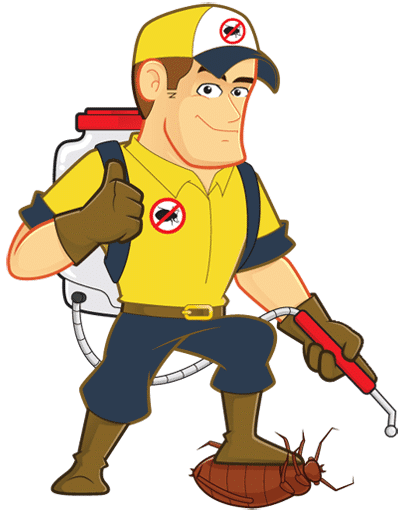
Why Hire Our Team
Our professional pest control services combine decades of pest management experience with proven treatment methods. We deliver customized solutions that effectively reduce mosquito populations around your property through targeted strategies.
Expertise in Professional Mosquito Management
We bring extensive experience in pest management to every mosquito control project. Our team stays current with the latest advancements in mosquito control technology and treatment methods.
Key qualifications include:
- Certified pest management professionals
- Continuous training on mosquito biology and behavior
- Knowledge of local mosquito species and breeding patterns
- Understanding of safe application techniques
We know exactly where to target treatments for maximum effectiveness. Our specialists identify mosquito resting areas, breeding sites, and activity zones that untrained individuals often miss.
Our experience spans residential and commercial properties. We understand how different environments require specific approaches to achieve optimal results. We design each mosquito control plan based on your specific property needs and mosquito activity levels. Our assessment process identifies the unique factors contributing to mosquito problems on your site.
